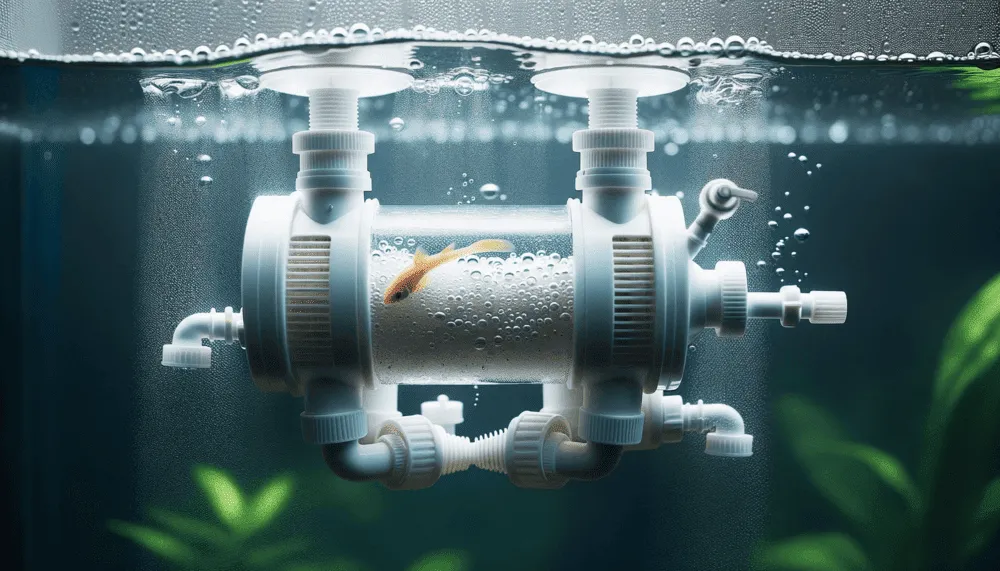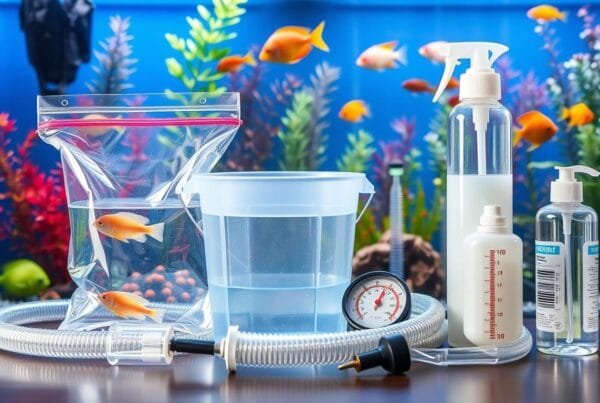Are you a proud owner of a marine tank with beautiful coral? If so, you may be wondering how to properly care for these stunning creatures to ensure their health and longevity. In this article, we will explore some essential tips and techniques for coral care in a marine tank. From providing the right lighting and water conditions to maintaining proper temperature and nutrient levels, we’ve got you covered in creating the perfect environment for your coral to thrive. So, let’s dive in and learn how to care for coral in your marine tank!
Selecting the Right Coral
Researching Different Coral Types
When selecting coral for your marine tank, it’s important to research the different types available. Coral comes in various shapes, sizes, and colors, each requiring different care and conditions. By familiarizing yourself with different coral species, you can choose ones that will thrive in your tank and suit your aesthetic preferences.
Considering the Tank Setup
Before choosing coral, consider the setup of your tank. Some corals require specific conditions such as strong lighting, specific water flow patterns, or the presence of live rock for attachment. Make sure your tank can provide the necessary environment for the coral you are interested in.
Choosing Healthy Coral Fragments
When selecting coral, always opt for healthy fragments. Look for corals with vibrant colors, extended polyps, and no signs of damage or diseases. Avoid corals with tissue recession, discoloration, or pests. Healthy coral fragments have a higher chance of survival and will contribute to the overall well-being of your marine tank.
Providing Proper Lighting
Understanding Light Requirements
Lighting is crucial for coral photosynthesis and growth. Different coral species have varying light requirements, ranging from low to high intensity. Research the specific light needs of the corals you plan to keep and ensure that your lighting system can provide the necessary spectrum and intensity.
Selecting the Right Lighting System
Investing in a quality lighting system is essential for coral care. LED lights have become popular for their energy efficiency and ability to produce the right spectrum for coral health. However, other types of lighting systems like metal halides and T5 fluorescents also work well. Consider factors like tank depth, coral light requirements, and budget when choosing the right lighting system for your coral.
Setting Up the Lighting Schedule
Establishing a proper lighting schedule is important to simulate the natural day-night cycle for your coral. Most corals require 8 to 12 hours of light per day. Start with shorter durations and gradually increase it to avoid stressing the coral. A timer can help automate the lighting schedule, ensuring consistency and convenience for both you and your coral.
Maintaining Water Parameters
Monitoring Temperature and Salinity
Consistently monitoring and maintaining proper temperature and salinity levels is crucial for coral health. Most coral species thrive in temperatures between 75-82°F (24-28°C), and salinity levels around 1.025. Use a reliable thermometer and refractometer to measure and monitor these parameters regularly, and make adjustments as necessary.
Maintaining the pH Level
Maintaining stable pH levels is vital for coral and other tank inhabitants. Most corals prefer a pH range of 8.0-8.4. Regularly test the pH of your tank using a quality test kit and make adjustments if needed. Proper water circulation and a well-maintained alkalinity level can help stabilize pH.
Testing and Adjusting Calcium, Alkalinity, and Magnesium Levels
Calcium, alkalinity, and magnesium are essential elements for coral growth and skeletal development. Regularly test these levels using reliable test kits and make adjustments as needed through water additives or dosing. Keep in mind that maintaining proper levels is essential for coral health and preventing issues like coral bleaching or stunted growth.
Implementing Effective Filtration
Choosing the Right Filtration Equipment
Proper filtration is crucial for maintaining water quality and preventing the build-up of harmful substances in your tank. Consider investing in quality equipment such as protein skimmers, mechanical filters, and biological filtration systems. Each plays a role in removing waste, excess nutrients, and harmful chemicals from the water.
Understanding the Nitrogen Cycle
Understanding the nitrogen cycle is essential for coral care. This natural process involves the breakdown of waste and the conversion of harmful ammonia into less toxic substances. By establishing a healthy biological filtration system and allowing time for the nitrogen cycle to establish, you can provide a stable and healthy environment for your corals.
Regular Water Changes
Regular water changes are crucial for coral health. They help remove accumulated waste, replenish important elements, and maintain overall water quality. Aim for weekly or bi-weekly water changes of about 10-20% of the tank volume. Use a high-quality salt mix and pre-mixed water to ensure the proper balance of essential elements and maintain stable water parameters.
Proper Water Flow
Creating Turbulence for Natural Water Movement
Providing adequate water flow is important for coral health and prevents the accumulation of debris and algae. Mimic natural water movement by creating turbulence in your tank. Use powerheads or wave makers strategically positioned to create gentle currents, ensuring all areas of the tank receive sufficient water flow.
Avoiding Dead Spots
Dead spots occur when water circulation is restricted, leading to stagnant areas where waste and debris accumulate. Avoid dead spots by strategically placing your powerheads, wave makers, or return pumps to promote even water flow across the entire tank. Regularly check for dead spots and adjust your equipment if necessary.
Using Powerheads or Wave Makers
Powerheads or wave makers are effective tools for creating water flow in your tank. Their adjustable flow rates allow you to tailor the water movement to the specific needs of your coral. Experiment with different positions and intensities to find the optimal water flow pattern for your coral’s requirements.
Feeding the Coral
Understanding Coral Nutrition
While corals primarily obtain energy through photosynthesis, they also benefit from additional feeding. Corals have different nutritional needs, which can be met by feeding them with small particulate foods, such as zooplankton or phytoplankton. Research the nutritional requirements of your specific coral types and consider incorporating targeted coral foods into their diet.
Feeding Strategies for Different Coral Types
Different coral types have different feeding strategies. Some corals have symbiotic relationships with photosynthetic algae, while others are entirely dependent on capturing prey. For example, LPS corals benefit from occasional feeding with meaty foods like shrimp. Research and understand the feeding habits of your coral species to provide the appropriate food and feeding schedule.
Avoiding Overfeeding
Overfeeding can lead to poor water quality and negatively impact coral health. It is crucial to feed corals in moderation, ensuring that any uneaten food is quickly removed from the tank. Introduce food slowly and observe how much your coral consumes within a few minutes. Adjust feeding quantities accordingly to avoid overfeeding and maintain optimal water conditions.
Regular Tank Maintenance
Cleaning the Tank
Regular cleaning of your tank is essential for the well-being of your corals. Use a clean algae scraper or magnet to remove any algae growth on the glass or acrylic surfaces. Be gentle yet thorough to avoid damaging the corals or disturbing their attachment points.
Siphoning Out Debris
Accumulated debris can impact water quality and lead to a decline in coral health. Regularly siphon out any waste, uneaten food, or detritus from the substrate. This helps maintain clean and stable water conditions, promoting the overall health and vitality of your coral.
Maintaining Equipment
Proper maintenance of your tank equipment is vital for its longevity and functionality, as well as the health of your coral. Regularly clean and inspect your filtration equipment, pumps, and lights to ensure they are working optimally. Replace any worn or malfunctioning parts promptly to avoid disruptions to your tank’s ecosystem.
Monitoring Coral Health
Observing Coral Behavior
Regular observation of your corals is crucial for identifying any changes in their behavior or appearance. Look out for signs of extended polyps, vibrant colors, and healthy growth. Changes such as closed or receding polyps, discoloration, or tissue damage may indicate coral distress or disease.
Recognizing Signs of Distress
Knowing the signs of coral distress is essential for early detection and intervention. Watch for indications such as bleaching, tissue recession, slime production, or unusual behavior like excessive retreat or aggression towards other corals. Promptly addressing these signs can help prevent further deterioration and promote coral recovery.
Responding to Coral Diseases or Infections
If you suspect your coral is suffering from a disease or infection, it’s important to take immediate action. Quarantine any affected coral fragments and seek advice from experienced professionals or marine biologists. Follow their guidance for treatment protocols or consider using coral dip solutions to combat common pests or infections.
Preventing Coral Pests and Predators
Identifying Common Coral Pests
Coral pests, such as flatworms or coral-eating snails, can harm and even kill corals if left unchecked. Regularly inspect your corals for signs of pests like lesions, damaged tissue, or unusual growths. Educate yourself on common coral pests to promptly identify and manage any infestations.
Taking Preventive Measures
Preventing coral pests and predators is crucial for maintaining a healthy tank. Quarantine any new coral additions to prevent introducing pests into your main tank. Ensure proper husbandry practices, such as regular cleaning and maintenance, to minimize the risk of pest infiltration. Additionally, avoid overcrowding your tank to reduce aggression and territorial disputes among corals.
Implementing Quarantine Procedures
Quarantining new coral additions is an effective way to prevent the spread of diseases and pests throughout your tank. Set up a separate quarantine tank and carefully observe and monitor the coral before introducing it into your main tank. Quarantine periods can vary, but a minimum of two weeks is recommended to ensure the new coral is healthy and free from any potential issues.
Educating Yourself and Seeking Expert Advice
Joining Reef-Keeping Communities
Being part of a reef-keeping community can provide you with valuable insights, experiences, and support. Join online forums or social media groups dedicated to marine tank keeping. Engage with fellow hobbyists, ask questions, and participate in discussions to expand your knowledge and stay up-to-date with the latest advancements in coral care.
Attending Workshops or Training
Attending workshops or training sessions related to marine tank keeping can further enhance your understanding of coral care. Look for local aquarium societies or marine organizations that offer educational events or workshops. These opportunities allow you to learn directly from experts and gain practical knowledge to apply in your own tank.
Consulting with Experienced Hobbyists or Marine Biologists
If you encounter specific challenges or have unique concerns regarding your coral, seek advice from experienced hobbyists or marine biologists. They can provide valuable insights and guidance tailored to your specific situation. Reach out to local aquatic stores, universities, or research institutions to connect with experts who can help address your concerns.
By following these comprehensive guidelines, you can provide the best care for coral in your marine tank. Remember, proper research, understanding the specific needs of your coral, and regular maintenance are key to keeping your corals healthy, vibrant, and thriving. Enjoy the beauty and wonder that coral brings to your aquatic environment while contributing to the conservation of these incredible marine organisms. Happy reef keeping!





